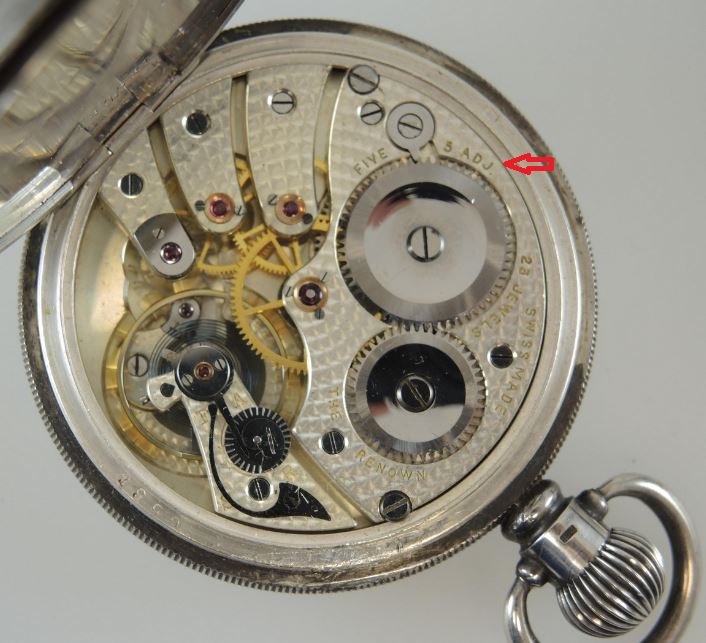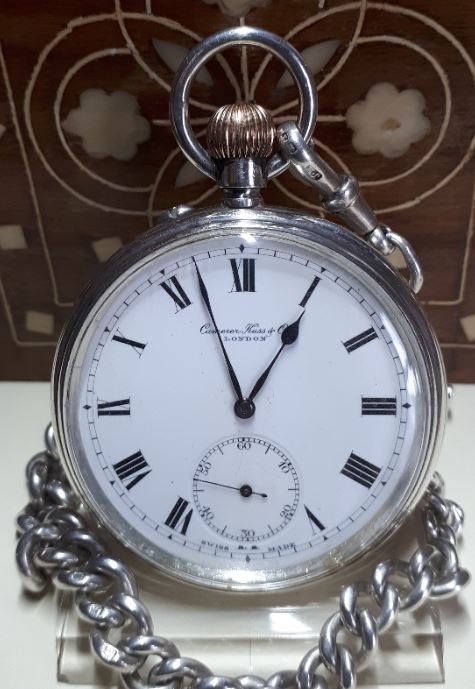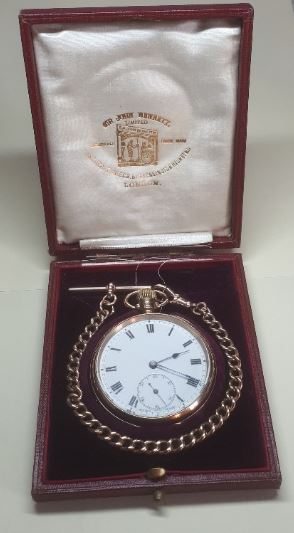Last updated on July 2, 2024
Perhaps you have inherited an antique pocket watch that has passed through your family for generations. Or possibly you have begun collecting antique pocket watches. Either way, you will have an interest in determining the value of the piece in your collection. This applies even if the watch is an heirloom that holds sentimental value. In this post, we will take a look at some of the factors that influence the value of antique watches.
It is important to note that pocket watches were made in their millions and there are still plenty of them in working order. I normally advise that the sentimental value of the watch will far outweigh the monetary value. A working, reliable antique pocket watch can be bought, fully serviced, from a reputable dealer starting at £200. However, some antique pocket watches can bring in much more money. Determining the value can be difficult. Here are the top 8 things to consider when determining the value of your pocket watch.
Maker
Maker is an interesting term when it comes to watchmaking. The name that appears on the dial can often be that of the retailer rather than the actual manufacturer. In addition, manufacturers themselves may have had dozens of registered brands. The movement is often branded in the same fashion so it can be difficult to tell exactly which manufacturer produced the watch. Often the manufacturer will provide an identifying mark or serial number on the bottom plate, which is the side to which the dial is fixed. This is not visible to anyone without the sufficient skills and tools to dismantle the watch. If you identify your watch as being made by any of the big names such as Omega, Longines or Rolex, these will hold an instantly higher value.
Rarity
If you can find information about how many of your specific watch model was made, you can determine its rarity. A pocket watch might look standard, but it also might have an unusual movement or complication, which will increase the value. The rarer the timepiece is, the more valuable it will be, all other things considered.
Material
Obviously, a gold or silver pocket watch will carry a greater value than a non-precious metal. This is based on the value of the case material alone. Some cases are made from cheaper metals such as nickel or stainless steel. If nothing else, watch cases made from precious metals have a value based on the scrap value of the weight of the underlying metal. Therefore, check the casing of your watch to determine the case material. Precious metals, such as gold or silver, will have hallmarks to identify the material they are made from. It would be a travesty if an antique pocket watch was sold based on the value of the base metal alone. Also, look to see if there are any additional gems or embellishments because these will add to the value.
Movement
The movement of an antique pocket watch has a greater influence on value than the casing materials. Movements with complications will generally be worth more. Sometimes you will need to remove the movement from the casing in order to examine it properly. This should be done with care and the right set of tools. If you don’t have any experience handling timepieces in this manner, always seek professional help. High-end pocket watches might include such finer details as embellished plates, elaborate regulators and diamond end-stones.
Jewels and adjustments
As a general rule of thumb, the more jewels and adjustments inside your pocket watch, the higher its value should be. These features indicate higher quality movements and therefore more valuable timepieces. Lower or basic quality movements tend to have jewel counts of 7 or 10. High-quality movements will have a jewel count of 15 or more. The adjustments will indicate how carefully the movement has been calibrated with high-end pieces having 5 or 6 adjustments. Jewels and adjustments are not always stamped on the movement, but a professional watchmaker should be able to assist with the count.

Condition
The condition of your pocket watch, both internally and externally, is a huge factor in determining the value that it holds today. Internally, it is important that the movement and adjustments are all working as they should be for the highest possible value. Additionally, the movement should be clean and free from any signs of corrosion. An unblemished movement is a good sign that it has been serviced and stored safely during its lifetime.
Externally, the casing should be free of any major damage. A minor dent or some fine scratching, I think, can add character to the watch and shouldn’t detract too much from the watches value. Obviously, mint condition would be ideal, but some minor blemishes can add to the charm. The case back should also open easily without being forced. The crystal should be free of visible scratches. If the crystal is mineral glass it will indicate that the lens could be original. Acrylic wasn’t invented until 1928. Therefore, an acrylic crystal will indicate a later replacement for an antique watch. The dial should also be free of visible cracks or damage. The branding (if any) and hour markers on the dial should be crisp and clear.
Provenance and paperwork
In respect to antiques, provenance is a record of ownership of an item. It can be used to certify authenticity, history and quality. Provenance can add a significant amount of monetary value to an antique watch. In some cases, the provenance can be of more value than the actual watch itself. This is particularly the case if the provenance proves a connection to a prominent historical person, place or event.
Good examples of provenance include original chronometer certificates, receipts, boxes and paperwork. Engravings or inscriptions on the watch case can also add provenance, but they can also detract from the originality of the watch.
Is the watch keeping time?
A minute or two of accuracy a day is perfectly acceptable for an antique watch. It should also have a usable power reserve, preferably 24 hours or more. However, if it is running outside of that range, stopping inexplicably or perhaps not running at all, you will need to consider the cost of a service when valuing the watch. The cost of a typical full-service is approximately £120 in the UK at the time of writing. This does not include the cost of any repairs required.
Professional advice
If you are looking to sell your antique pocket watch, always get a professional opinion. A professional will know what to look for in terms of value for an antique pocket watch. They will also understand how to handle older, delicate watches without causing damage. While the 8 factors above can all help to determine the value of a pocket watch, you will not know for sure until it is valued by an expert.
If you want to get an estimate as to the value of your antique pocket watch, online sites such as E-bay and Fellows can give a good indication. Just make sure you look at the sold value of the watches, rather than the bid values. This is the best real-world indicator of what someone might be willing to pay for a particular watch. Again, proper identification is critical, as it is essential to know whether the watch you’re looking at is really the same as yours. Additionally, it is worth factoring in the cost of a full-service when valuing an antique pocket watch.
Related content
A beginner’s guide to antique pocket watches.
Tax benefits for UK antique watch collectors.
5 things you should know before purchasing an antique watch.
A list of additional posts regarding antique watches can be found on the Guides page.


